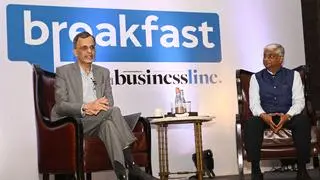The International Monetary Fund (IMF) foresees India’s economic growth rebounding to 7.2 per cent next fiscal, up from the projected 6.6 per cent in 2016-17 after demonetisation.
In its Article IV consultations report, the contents of which were released in Washington on Wednesday, the IMF said that the post-November 8, 2016 cash shortages and payment disruptions caused by the “currency exchange initiative” had undermined consumption and business activity, posing a new challenge to sustaining the growth momentum.
Tailwinds from a favourable monsoon, low oil prices and continued progress in resolving supply-side bottlenecks, as well as robust consumer confidence will support near-term growth as cash shortages ease, IMF added.
Under Article IV of the IMF’s Articles of Agreement, the IMF holds bilateral discussions with members, usually every year.
A staff team visits the country, collects economic and financial information, and discusses with officials the country’s economic developments and policies.
The staff prepares a report after returning to Washington, which forms the basis of discussion by the Executive Board.
IMF’s Executive Board had on January 25 concluded its Article IV consultation with India.
Uneven recovery Meanwhile, in its Article IV report, IMF has noted that investment recovery is expected to remain modest and uneven across sectors, as de-leveraging takes place and industrial capacity utilisation picks up. With temporary demand disruptions and increased monsoon-driven food supplies, inflation is expected at about 4.75 per cent by early 2017 — in line with the Reserve Bank of India’s inflation target of 5 per cent by March 2017. The IMF also said that supply-side reforms , particularly in agriculture, continued fiscal consolidation, and relieving impediments to monetary transmission are crucial to retail low inflation in the medium term.
The Fund expects the current account deficit to widen to about two per cent of GDP over the medium term as domestic demand strengthens further and commodity prices gradually rebound.
Also, the 2016-17 Budget deficit target of 3.5 per cent of GDP (equivalent to 3.8 per cent of GDP in IMF terms) will likely be achieved.
GST boost Continued progress in reforms bodes well for a marked improvement in medium-term prospects, with the adoption of goods and services tax poised to raise India’s medium term GDP growth to above eight per cent, IMF has said. The Executive Directors’ of the IMF acknowledged the authorities’ strong policy push for cleaning up bank balance sheets and welcomed legislation establishing the new bankruptcy code.
They, however, noted that elevated corporate sector risks and heightened levels of non-performing assets in public sector banks continue to pose risks to banks’ soundness.
Directors’ also emphasised the importance of augmenting capital buffers and continued governance reform of these banks, strengthening the resolution regime for distressed bank assets by augmenting the capacity of newly established mechanisms, and further measures to develop corporate debt markets, as key to enhancing the financial system’s ability to contribute to growth.
srivats.kr@thehindu.co.in








Comments
Comments have to be in English, and in full sentences. They cannot be abusive or personal. Please abide by our community guidelines for posting your comments.
We have migrated to a new commenting platform. If you are already a registered user of TheHindu Businessline and logged in, you may continue to engage with our articles. If you do not have an account please register and login to post comments. Users can access their older comments by logging into their accounts on Vuukle.